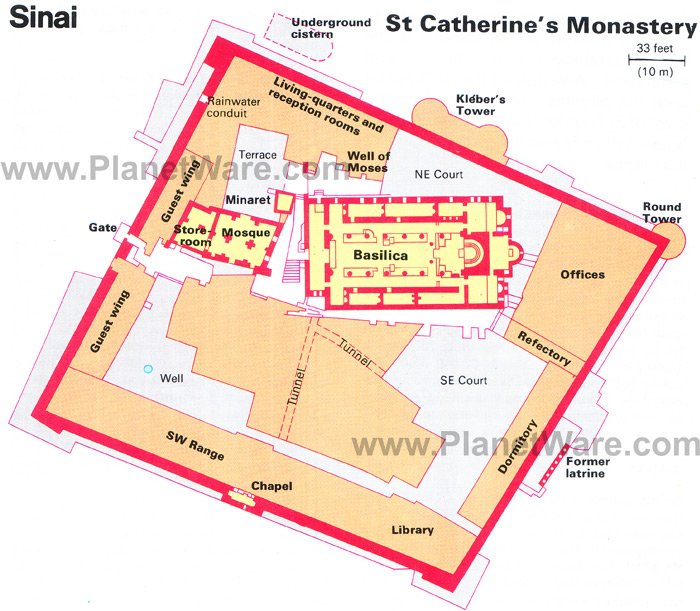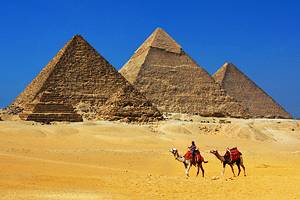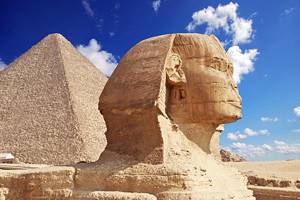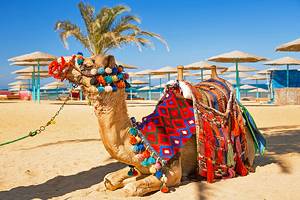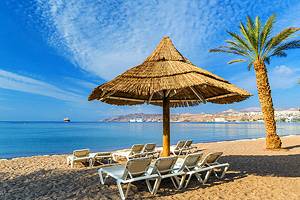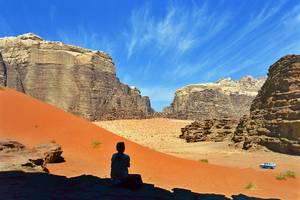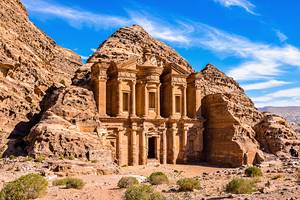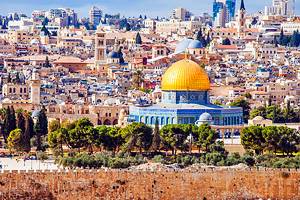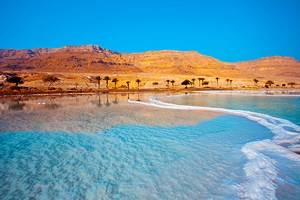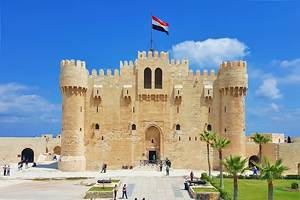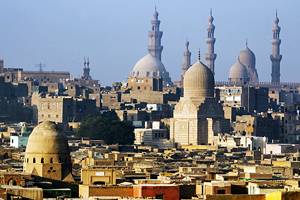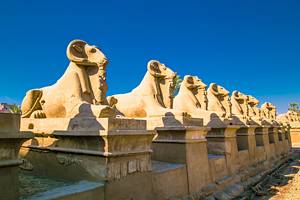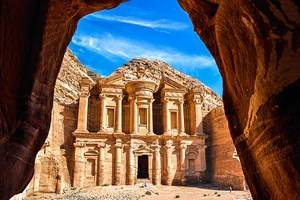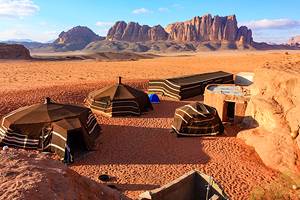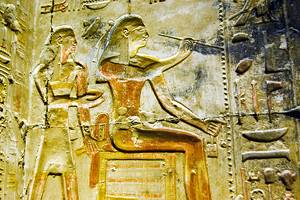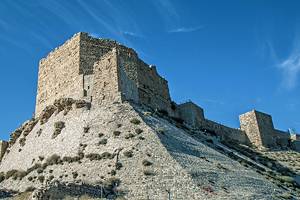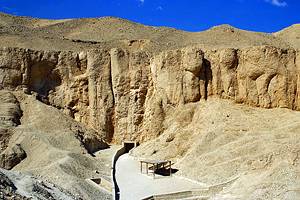Saint Catherine's Monastery: A Visitor's Guide
The isolated hermitage of Saint Catherine's Monastery sits snug between the craggy peaks of the Sinai High Mountain Range.
One of the world's oldest working monasteries, Saint Catherine's has been a vortex for both pilgrims and adventurous travelers for centuries.
Its fame and mystique comes from its location at the foot of Mount Sinai, the site of the Old Testament's story of the Ten Commandments, and so is revered by Christians, Jews, and Muslims alike.
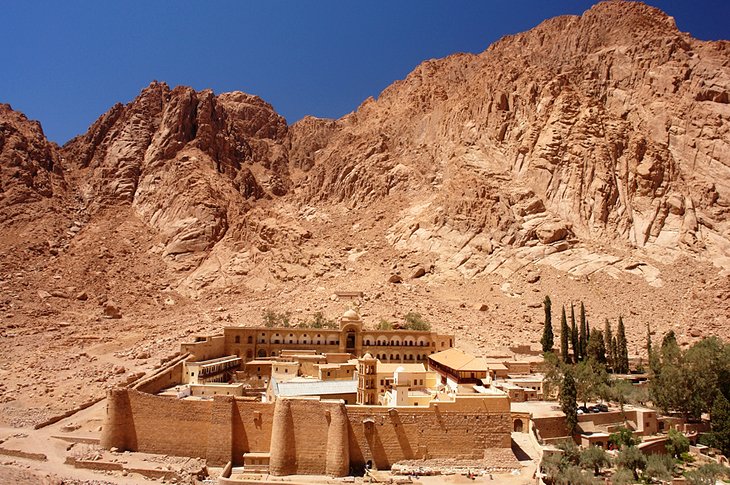
The monastery is also home to the "burning bush" and hosts one of the most renowned collections of religious icons in the world, a selection of which is on display to visitors in The Sacred Sacristy monastery museum.
Today, travelers and pilgrims in Egypt are still drawn to the barren, mountainous core of the Sinai Peninsula to both visit the monastery and hike to the summit of Mount Sinai.
Saint Catherine's Monastery sits a few kilometers away from the small settlement of Al-Milga, which has a couple of hotels and budget hostels, as well as some simple restaurants. For keen hikers who want to explore the Sinai's desert mountains, this village is a good base.
Most visitors, though, arrive as part of an organized day tour from the South Sinai resorts of Sharm el-Sheikh (209 kilometers southeast) and Dahab (132 kilometers east).
Use our visitor's guide to Saint Catherine's Monastery to find out more about the monastery itself and the historic and natural tourist attractions in the surrounding area.
On This Page:
- Church of the Transfiguration
- The Burning Bush
- The Sacred Sacristy: The Gold and Glory of the Monastery Museum
- Monastery Mosque
- Monastery Library: One of the World's Great Religious Manuscript Collections
- Monastery Gardens
- The History of Saint Catherine's Monastery: One of Early Christianity's Survivors
- Around Saint Catherine's Monastery
- Tips and Tactics: How to Make the Most of Your Visit to Saint Catherine's Monastery
- Getting to Saint Catherine's Monastery
Church of the Transfiguration
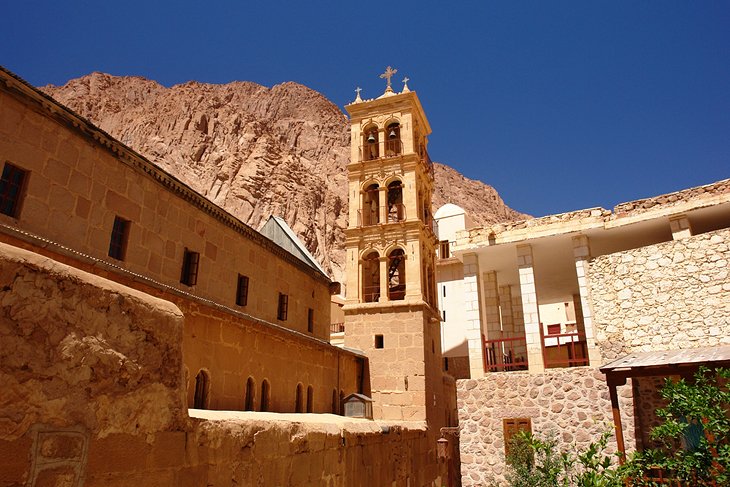
The Church of the Transfiguration is the monastery's focal point and dominates the entire complex.
Built under orders by the Byzantine Emperor Justinian, the church's elaborately carved wooden door leads you into the three-aisled basilica.
Heavy granite columns boasting richly decorated foliage capitals separate the aisles, while on the walls, paintings of saints stare down from above.
The nave is separated from the apse by a gilded iconostasis completed in 1612.
In the apse, and out of bounds to visitors, is the gloriously ornate sarcophagus that holds the remains of Saint Catherine. The sarcophagus was presented to the monastery as a gift from Empress Catherine of Russia.
Behind the Apse - also closed to visitors - is the Chapel of the Burning Bush.
This was the original church of the monastery, built on Byzantine Empress Helena's orders. A silver plaque in the floor here marks the spot where God is supposed to have appeared to Moses.
Don't Miss: If you crane your neck upwards by the apse, you can make out some of the detail of the famous Mosaic of the Transfiguration, one of Saint Catherine's Monastery's most renowned treasures.
This magnificently detailed mosaic dates from AD 542 and depicts the Transfigured Christ surrounded by prophets, apostles, and saints.
Unfortunately, the ornate hanging candelabra of the apse, as well as the iconostasis, mean that you cannot get more than a peek at this Byzantine art treasure.
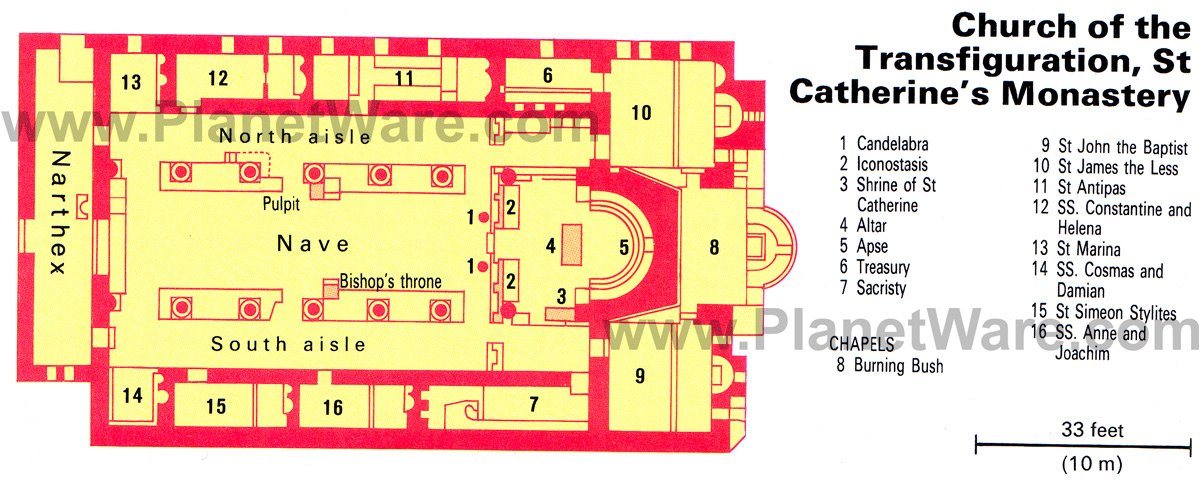
The Burning Bush
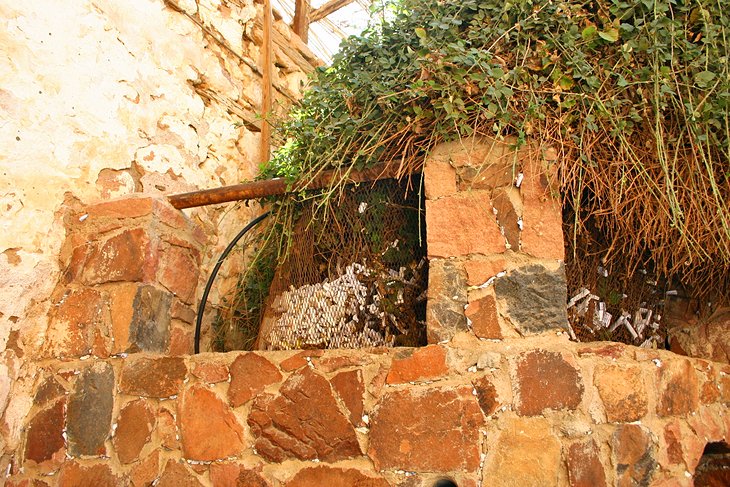
For many pilgrim visitors, the most important tourist attraction within the monastery is the Burning Bush, which local legend says is a direct descendant of the Old Testament's burning bush that God spoke to Moses through.
The actual bush is the Rubus Sanctus bramble, which is endemic to the Sinai Peninsula.
A wall now surrounds the shrub to protect it from being stripped by pilgrims who, for many years, snipped branches off to take home as souvenirs.
The Sacred Sacristy: The Gold and Glory of the Monastery Museum
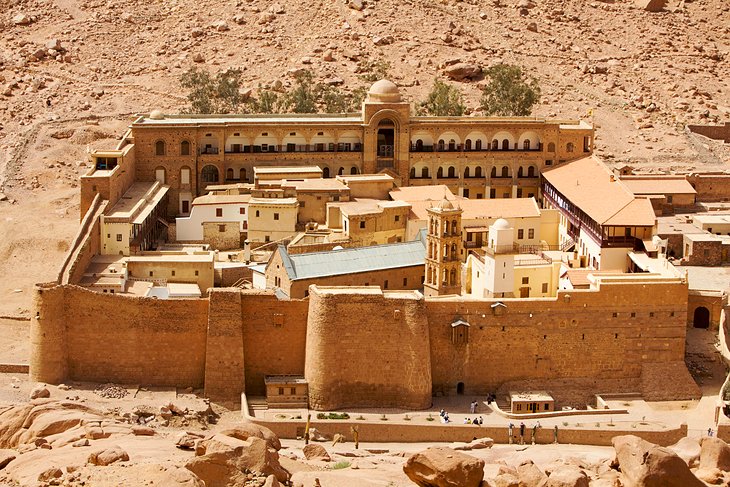
Just west of the Church of the Transfiguration, a set of stairs leads up to the monastery's fantastic museum, known as the Sacred Sacristy. This is, by far, the most interesting section of the monastery open to the public.
The monastery is home to one of the world's most extensive and prized collections of religious manuscripts, art, and icons. The vast majority of this, though, is not on public view and can only be accessed by visiting academics who have acquired permission from the monastery authorities. For the visiting public, The Sacred Sacristy presents a well-thought-out and beautifully presented selection of these treasures.
Don't Miss: In the museum's first room, you can see one of the most famous icons in the monastery's possession - the 12th-century painting of the Ladder of Divine Ascent.
Also here, you'll find the monastery's copy of the Ahtiname. This was the document, signed by the Prophet Mohammed, which guaranteed the monastery's protection when the Arab armies conquered Egypt.
In the basement room, you'll find the monastery's most famous treasure. On display here are parchments from the Codex Sinaiticus, acclaimed as the oldest bible in the world.
The book was discovered in the monastery's library by biblical scholar Constantin von Tischendorf in the 1850s, who then removed a large section of the book and took it to Russia. This missing section was later sold, by Stalin, to the UK, which now displays this further portion of the bible in London's British Library.
Monastery Mosque
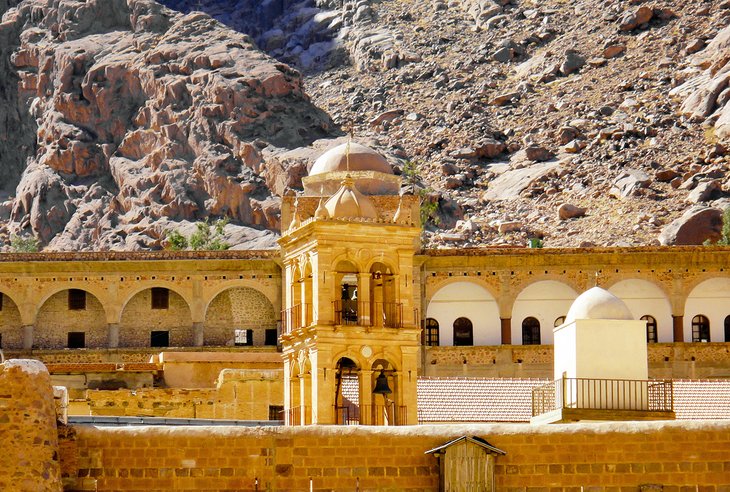
Opposite the Church of the Transfiguration is a simple mosque with a separate minaret.
The monks built it in the 11th century during the Fatimid period, when Caliph Al-Hakim was destroying Christian places of worship.
The mosque's construction meant that the monastery was spared from the caliph's rampage.
Monastery Library: One of the World's Great Religious Manuscript Collections
The monastery library holds one of the largest and most interesting collections of religious texts in existence but unfortunately, it is not open to the public.
The large numbers of valuable old manuscripts (more than 2,000) include works in Greek, Syriac, Persian, Amharic, Arabic, Turkish, and Russian.
Monastery Gardens
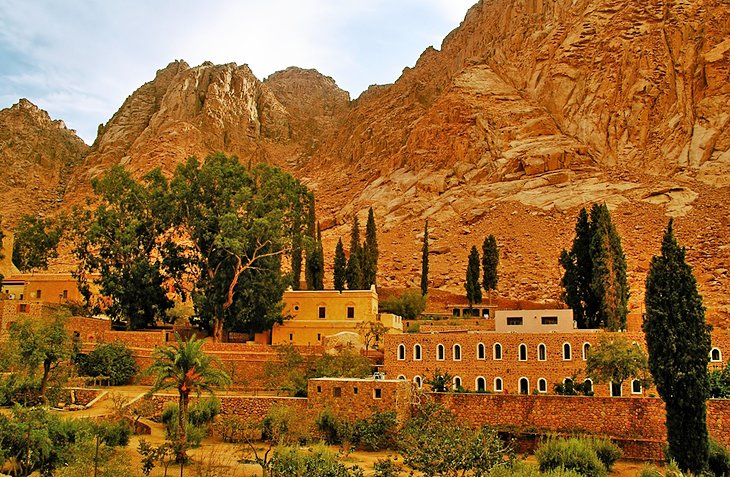
Outside the monastery walls, to the northwest, are the beautiful monastery gardens, shaded by tall cypresses, which have their finest show of blossoms in March and April.
The gardens are laid out in terraces, and in addition to the flowers, they produce a variety of fruits and vegetables.
Also outside the walls is the pilgrims' cemetery, and in the crypt of St. Tryphon's Chapel, the charnel house, which is also the place of burial of the monks.
The History of Saint Catherine's Monastery: One of Early Christianity's Survivors
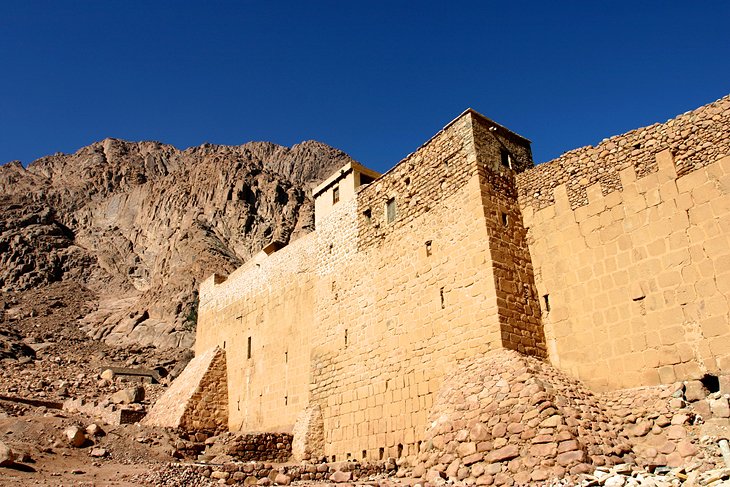
The present monastery dates back to AD 530 and the rule of the Byzantine Emperor Justinian and occupies the site of an earlier church founded by the Empress Helena.
Even earlier than that, hermits and anchorites had been settling here (probably since the 2nd century AD), claiming the area as the site of the Old Testament story of Moses.
The monastery was able to maintain itself in spite of the advance of Islam thanks to its great hospitality to Muslim as well as Christian travelers and to its care of Muslim shrines.
Most of the monks came, and still come, from Crete and Cyprus.
Their numbers, which around the year 1000 were between 300 and 400, have now shrunk to about 50, of whom only 20 live in the monastery itself.
The rules of the order are extremely strict, and the order is headed by an Archbishop, who is normally resident in Cairo and is, therefore, usually represented by a Prior, the Dikaios.
Around Saint Catherine's Monastery
Mount Sinai: The Mountain of Moses
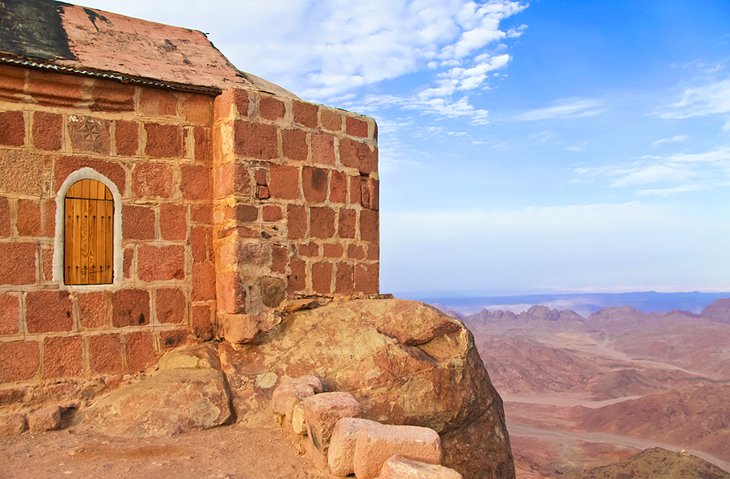
The ascent of 2,285-meter-high Mount Sinai (Jebel Musa in Arabic) is a tiring but extremely rewarding hike that is also very meaningful for pilgrims.
Jebel Musa is revered as the mountain that the prophet Moses received the 10 Commandments on and is a sacred mountain to Jews, Christians, and Muslims.
There are two main routes up the mountain.
The more strenuous path is known as The Steps of Repentance and is thought to have been established in the 6th century. It's a steep slog up 2,500 stone-cut steps to the summit this way.
The alternative, easier, route is the Camel Trail, a switch-back gravel track up the mountain.
Both paths meet at Elijah's Basin from where the last 500 stairs of the Steps of Repentance have to be hiked up by everyone.
The trek to the summit takes two to three hours.
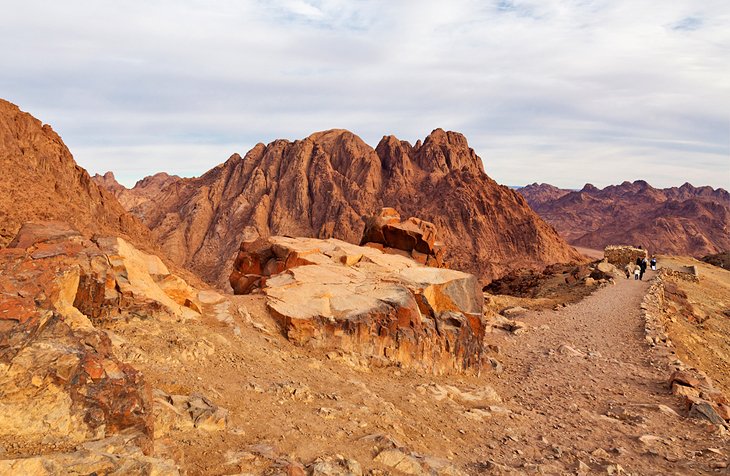
On the summit of the mountain are a small chapel (built in 1930 on the site of an earlier chapel, which had been destroyed) and a small mosque, which is much revered by Muslims. Both are kept locked.
Beside the mosque is a cistern-like cavity in which, according to Muslim tradition, Moses lived for 40 days, fasting, while writing down the Law on two tablets.
From the summit of Jebel Musa, there are breathtaking views of the wild and desolate surrounding country, extending southwest beyond the highest peaks of Sinai to the Red Sea and the Gulf of Aqaba, and northwest over the hills of southern Sinai to the lower country.
Wadi el-Leja: A Valley of Hidden Hermitages
Another rewarding excursion is to Wadi el-Leja, which flanks the west side of Mount Sinai and contains many places revered as sacred.
At the entrance to the valley, on the right, are the ruins of the huts in which SS. Cosmas and Damian lived as hermits, and a chapel dedicated to the Apostles but never used. On the left is the ruined Monastery of El-Bustan.
Beyond the Monastery of El-Bustan is the Stone of Moses, from which Moses drew water by striking it with his rod. It is a 3.6-meter-high block of reddish brown granite divided into two parts by a 40-centimeter-thick vein of porphyry on the south side.
The water is said to have flowed from 12 cavities in the porphyry, one for each of the tribes of Israel (two of the cavities are now missing). On the rock are a number of Sinaitic inscriptions.
Some two kilometers south of the Stone of Moses is the Deir el-Arbain, the Monastery of the Forty Martyrs.
It is an unpretentious building with a large garden. In the rocky upper part is a spring, and near this, a cave in which St. Onuphrius is said to have lived as a hermit. The monastery was abandoned in the 17th century but is still occasionally occupied by a few monks.
Mount Saint Catherine
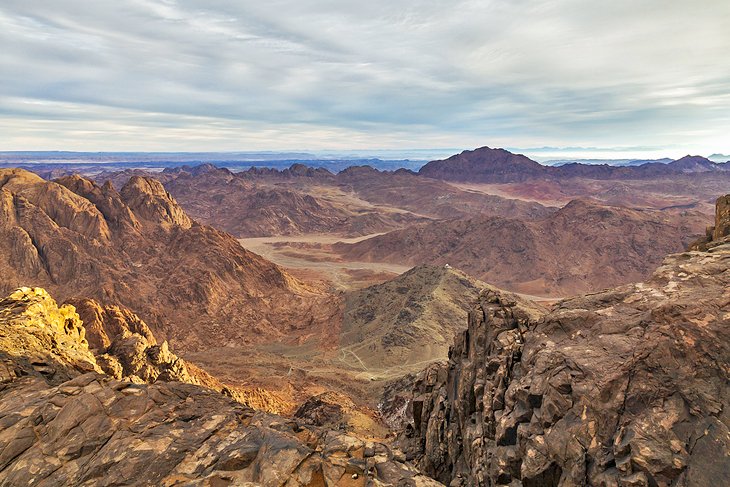
The ascent of 2,642-meter Mount Saint Catherine (Gebel Katerin), Sinai's highest mountain, is more strenuous than that of Mount Sinai and should only be undertaken if you have a decent fitness level.
The route to the summit from the Deir el-Arbain is marked by cairns set up by pilgrims.
It can be very cold on the top, and snow lies in crevices in the rock right into summer.
On the summit are a modest little chapel and some irregularities in the ground, explained by the monks as the marks left by Saint Catherine's body, which is said to have lain here after her execution for 300 (some say 500) years before being revealed by the light radiating from it.
From the summit, there are magnificent views, interrupted only by the massive bulk of Gebel Umm Shomar (2,575 meters) to the southwest.
Visible to the southeast are the Gulf of Aqaba, the Arabian Mountains, and, in good weather, Ras Muhammad at the southern tip of Sinai.
Tips and Tactics: How to Make the Most of Your Visit to Saint Catherine's Monastery
- Timing: As the monastery is only open between 9am and noon, you would be very lucky to escape the crowds completely. However, the last half hour of opening time tends to be the least crowded. Nearly all tour groups head directly to the Church of the Transfiguration, so a good tactic, if you find yourself entering at the same time as a large group, is to visit the Sacred Sacristy first.
- What to Wear: To enter the monastery, you will need to have both your upper arms and knees covered. Shorts, short skirts, and sleeveless tops are banned for both males and females. This clothing rule is strictly enforced, so cover up if you want to gain entry.
- Climbing Mount Sinai without the Crowds: Most people climb Mount Sinai in the pre-dawn hours to view sunrise from the summit. Climbing in the late afternoon, to see sunset, is a much quieter, more tranquil experience. Do remember, though, that this means you'll be descending in the dark. Be sure to bring a flashlight and wear sturdy hiking shoes.
- Staying Overnight: For those who want to experience the serene beauty of the mountain area around the monastery after the tourist hustle has disappeared for the day, the monastery has a guesthouse in its gardens. There are further accommodation options in Al Milga, a couple of kilometers from the monastery itself.
Getting to Saint Catherine's Monastery
- By Tour Bus: Most people arrive at Saint Catherine's Monastery by tour bus from either Sharm el-Sheikh or Dahab. This is by far the easiest option, though you have to be prepared to be visiting as part of a big group. Many tour bus trips also combine climbing Mount Sinai into the trip. The combined trips usually leave late at night to climb the mountain at 4am and return down the mountain in time for the monastery to open its gates at 9am.
- By Private Car: Taxi drivers in both Sharm el-Sheikh and Dahab can take you to Saint Catherine's.
- By Public Bus: There is one public bus service daily between Al Milga and Cairo. If you want to stay overnight and explore the desert area here further, this is a great budget transport option. There is no public bus service between the Sinai beach resort towns and Al Milga. To head onwards to Sharm el-Sheikh or Dahab, you'll have to hire a taxi driver in Al Milga.
More Related Articles on PlanetWare.com
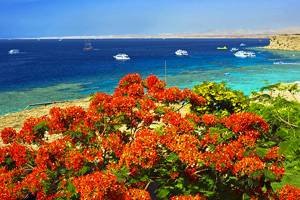
Sinai: Head east to the coast for beach-time. Sharm el-Sheikh is Egypt's prime beach resort, with the famed dive sites of Ras Mohammed National Park just offshore.
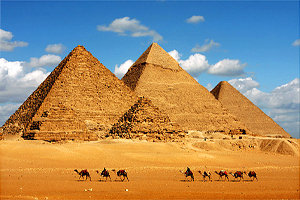
History: After checking out the early Christian history of St. Catherine's Monastery and Mount Sinai, head even further back in time amid the temples and tombs of Luxor or travel on to Cairo for the iconic Giza Pyramids and the city's beautiful monuments from the Mamluk era.
